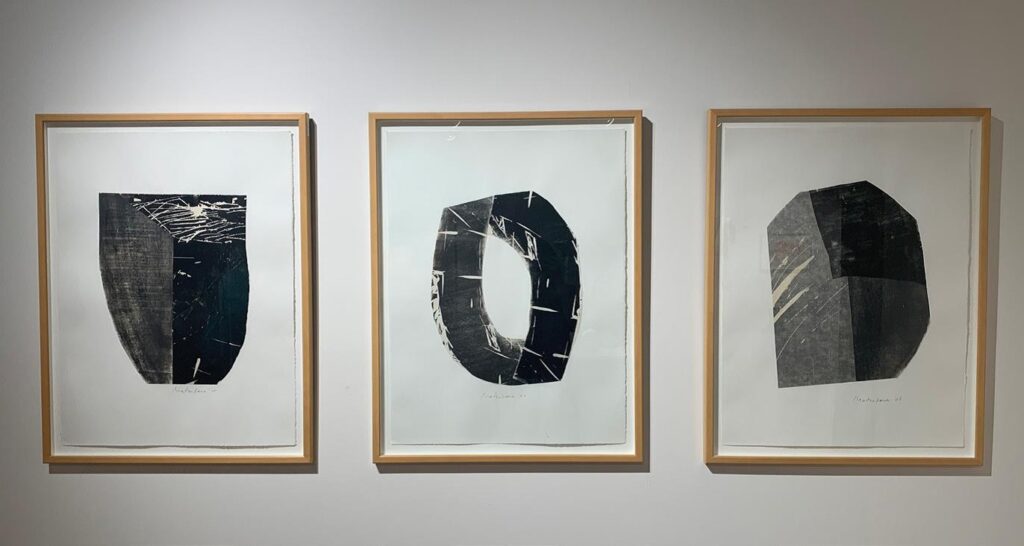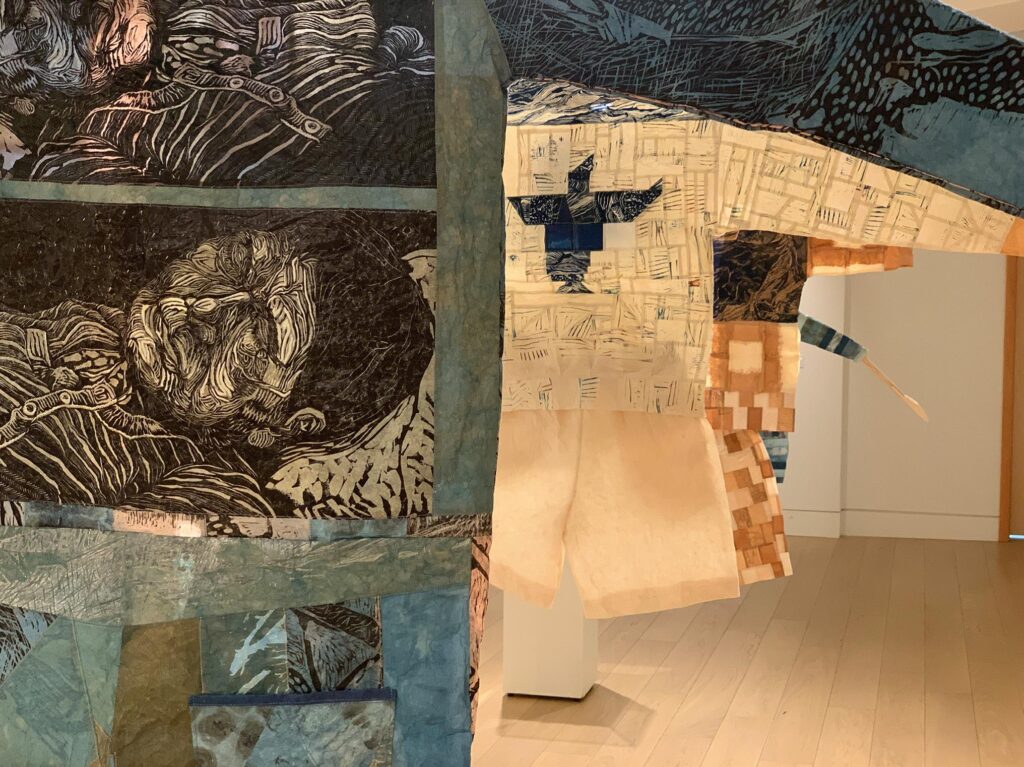By Song Xianjun
How can a piece of paper hold the weight of centuries of culture?
The current exhibition at Burnaby’s Nikkei National Museum and Culture Center, WASHI, provides a gateway to explore how this ancient form of paper-making has played a fundamental role in Japanese art through the ages. This sense of history is shone through both a Western and Eastern cross-cultural lens with the work of Canadian artists Naoko Matsubara and Alexa Hatanaka.
Naoko Matsubara was born in 1930s Japan with a deep influence of the country’s tradition and culture. During her study of design in Kyoto in the 1950s, her professor Felice “Lizzi” Rix-Ueno of Vienna — known as Richi-sensei— became an influential figure in her life and opened her mind with his unconventional approaches to traditional art practices. Encouraged by Richi-sensei, Matsubara left Japan for North America on two separate occasions and eventually settled in Oakville, Ontario, where she continued her art and printmaking journey. Though her craft of the traditional art form grew, Matsubara didn’t shy away from exploring new innovative techniques and voices.
Upon entering the Nikkei show, Matsubara’s large-scale print ‘Tagasode’ greets you at the gallery entrance. The concept of ‘Tagasode’, (“Whose Sleeves?”) can be found in Japanese classical love poetry; it refers to an absent woman whose beautiful robes evoke memories of their owner. During the 17th-20th century, Tagasode became a fashionable motif in traditional panelled screens with painted images of a draped women’s garments over a lacquered rack. In her piece, Matsubara reinterprets this classic motif with quivering brisk strokes, vibrant colours, and abstract geometric forms and patterns by using 17 different wood blocks to print on washi paper with oil-based ink. The bold and bright colours and shapes show that those sleeves definitely belong to someone special!

Opposite this wood-cut collage, there is another set of experimental works. With ‘Homage to Sculpture A, B and C,’ Matsubara uses her “magic” knife to create a seemingly 3D sculpted pattern on woodblocks, which is then printed on washi paper. “That’s my aspiration, to become a sculptor,” Matsubara said in an online interview with a big smile.
With her ambition of becoming a sculptor, Matsubara made 10 Washi sculptures with organic shapes, all made from leftover pieces from her canvas. Matsubara lived through the Second World War and postwar Japan when the spirit of mottainai (too good to waste) was essential to everyday life. These exquisite washi sculptures are the best example of her art practice with this Japanese life philosophy.

Alexa Hatanaka is a yonsei (fourth generation) Japanese Canadian, born and raised in Toronto. From a completely different generation than Matsubara, with this show, Hatanaka draws on cross-cultural practices through making and handling paper.
Hatanaka’s work’ Untitled (Grandma hazmat suit )’ at the gallery’s center hangs from the ceiling. An amalgamation of several inspirations from her grandmother, the piece incorporates a portrait of her grandmother, a gyotaku (fish print) of her grandmother’s favourite fish (mackerel), and an archived photo of the aftermath of an earthquake that occurred in Japan in 1925. This last photo left a profound impression on Hatanaka. In the exhibition program, she explains how the unpredictable destruction of natural disasters is a metaphor for massive change.
Hatanaka also created her rendition of washi Tabis (traditional Japanese footwear) and Kamiko hats with the washi suits she created for the show. Using the same philosophy of mottainai (too good to waste) as Matsubara did, she used left-over washi ends, old proofs, and materials like rice bags and created beautiful patchwork garments and traditional ornamental pieces.
Hatanaka transformed washi into a protective gear of a hazmat suit and enhanced the traditional decorative Japanese paper garment into 21st-century wearable art by adding materials like aizome, (indigo dye) kakishibu (aged persimmon tannin) and momigami (“kneaded paper”).

Behind these gorgeous washi fashions, another conceptual piece by Hatanaka hangs: ‘SHOGANAI.’ Two long vertical installations of patchwork fabric again dyed with kakishibu to show the Western alphabet, and aizome for the Japanese phonetic lettering, hiragana, shows us the gentle yet daunting word of ‘shogana’i. A phrase that can be roughly translated to “it can’t be helped” or “there’s nothing we can do.” As another aspect of Japanese philosophy, this expression might seem pessimistic from a Western perspective. Still, it holds a complex articulation of accepting that a situation is “out of one’s control.” With that sentiment, you’re encouraged to move on and let go. It’s a word we could all use today when facing an uncontrollable present and unpredictable future.
So many details and stories are hidden in this delicate show, so it is well worth taking a close-up look on-site before it ends on February 2, 2023.
For more information about Washi, visit centre.nikkeiplace.org
The museum has even outlined how to get there via transit with a handy video: centre.nikkeiplace.org/visit-us
*All photo courtesy of Nikkei National Museum and Culture Center

Plan your route to see this show or other community events at the museum with TransLink Trip Planner.
The post Washi, the Beauty Within at Nikkei National Museum appeared first on West Coast Curated.
